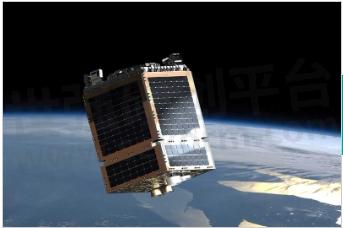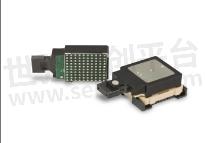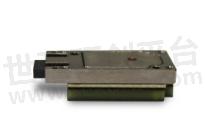Spaceable Modules Offer High Aggregate Data Rates to The Internet of Space And Radiation Resistant Transceivers

The explosion of worldwide communications over the past 25 years has led to the pervasive use of mobile and land communications equipment with an abundance of platforms, applications, and devices all driving the growth of many of the largest businesses in the world. There is no doubt that this trend will continue through the Internet of Things (IoT), and the arrival of the 5G technology along with improvements to the underlying network infrastructure. However, the next, ‘Small Step’ for man in terms of ubiquitous communications will be the ‘Giant Leap’ into the Internet of Space.
Internet of Space
The Internet of Space (IoS) is a long-term vision that leaders in some of the most technologically advanced companies in the world have begun to seriously consider. Both the European Space Agency and NASA have prepared plans that involve the deployment of networks of satellite around the Earth, Mars and the Sun. These networks are composed of complex communications networks for MIMO microwave antenna arrays and free-space line-of-sight laser links.
These technologies will be responsible for the communications of manned missions to Mars and will have to have the best in terms of redundancy, speed, and network management as most of what we send up, will never be fixed. Further to this however, will be the machine-learning A.I. systems on-board exploratory robots and landers for the moon and Mars including asteroid mining that will be tasked with resource extraction. For example, before the arrival of astronauts on Mars, dozens of intelligent, self-exploring robots and rovers will have to have found water on the planet for them. Basically, the self-driving cars of today will become the self-exploring robots of space.
New players in space exploration
The success of companies like SpaceX or Blue Origin have shown that many of the traditionally held ideas about space exploration are breaking down and commercial opportunities are staring to be explored.
A great deal of these new developments are directed at bringing broadband connectivity to the roughly 3 billion people who lack Internet access today: rural schools, clinics, markets and businesses, ships at sea, planes in the air, mobile-phone towers, high-speed stocks trading, cars, trains, buses, Internet of things sensors and appliances, governments, enterprises, military, etc.
For applications which benefit from low-latency communications (like broadband access) LEO satellite constellations provide an advantage over geostationary satellites, because latency from ground to satellite is dramatically reduced. A LEO satellite constellation can also provide more system capacity by frequency reuse across its coverage.
Furthermore, the lower orbits will help ensure the satellites re-enter the atmosphere in a shorter time in case of failure and will enable them to broadcast signals at reduced power levels, because they are closer to Earth, which allow the fleet to be compliant with limits to reduce radio interference with other satellite and terrestrial wireless networks.
Competing and complementary projects
OneWeb Satellites is planning the launch 648 satellites into low Earth orbit by the end of 2022, to deliver Internet access globally.
The company had launched 36 satellites on 17 December 2020 to add to the 104 already in operation. Furthermore, OneWeb announced plans to accelerate launches in 2021 to have 650 satellites in orbit by 2022 necessary for global coverage.
SpaceX’s backed Starlink satellite constellation aims "to provide low-latency broadband to unserved and underserved Americans that is on par with service previously only available in urban areas". The current phase of this project calls for the deployment of approximately 1600 satellites in LEO orbit on a 550 km orbital plane. Close to 1000 Starlink satellites are already deployed and a beta Starlink service is available to select customers in the northern US and southern Canada (as of February 2021).
Not to be outdone, Amazon has also announced its Kuiper project. They expect to take up to a decade to fully deploy all 3,236 satellites planned for the full constellation in order to provide internet to tens of millions of people who lack basic access to broadband internet.

Artist representation of a Telesat LEO satellite.
TeleSat, a Canadian company, has a plan to deploy almost over 1600 LEO satellites to serve as an interconnect for continual data networks for ship and aircraft connections over the oceans. In order to serve the entire globe they plan to have two sub-constellations, one with 351 satellites in polar orbits and another with 1320 in inclined orbits.
There are also plans for large satellite constellations within China’s "Digital Silk Road" (DSR) project. With over half the people in the world living in or near China and India, many of them with no connectivity, and some paying very high rates for geosynchronous satellite service, one can see the immense commercial potential.
Less publicized are defense-driven initiatives like the DARPA Blackjack program. Blackjack are small American surveillance satellites that would replace or compliment larger systems already deployed. These new orbiters will be cheaper and would have limited capabilities, but would operate as part of a constellation networked together. Open sources indicated the first two satellites would be launched in the third quarter of 2021.
Space environment
As more commercial-off-the-shelf (COTS) parts are targeted for space applications as a mean to take advantage of powerful technologies at lower costs, a more meaningful business-case for vendors can now be made to support the space-vendor-ecosystem.
However, there is a catch… The space environment itself is extremely severe; outside the protective cushion of the earth’s magnetosphere the exposure to radiation and extreme temperatures can destroy terrestrial electronics. Therefore, to really open these markets, the vendors will have to meet the space community half-way, and do what they can to “space-ify” their COTS products.
Smiths Interconnect has a plan to do just that – with the cost of sending even just 1 kg into space at over $50 k, the advantages of using the Reflex Photonics line of small, lightweight, high density SpaceABLE™ parallel optical transceiver modules inside the satellites will impact this enormously.

SpaceABLE SM (10.3125 Gbps) modules are available in different configurations: 40G (full-duplex: 4 TX plus 4 RX lane per device) and 120G (12 TX or 12 RX channel per device).

SpaceABLE SL (10.3125 Gbps) modules are available in different configurations: 40G (full-duplex: 4 TX plus 4 RX lane per device) and 120G (12 TX or 12 RX channel per device).

SpaceABLE28 modules
SpaceABLE28 SL (28 Gbps) modules are available in different configurations: 100G (full-duplex: 4 TX plus 4 RX lane per device) and 300G (12 TX or 12 RX channel per device).
The family of Reflex Photonics SpaceABLE modules offer extremely high aggregate data rates (over 300 Gbps), the modules are less than 3 cm2 and weigh less than 5 g. They can be placed anywhere on a motherboard or linecard linking powerful CPU’s, GPU’s and FPGA’s across multiple boards and racks.
Rigorous testing
In terms of reliability, the SpaceABLE product follows the rigorous environmental testing of MIL-STD-883 with a variety of thermal shock, vibration, humidity and cycling tests included. Furthermore, these modules are qualified under very stringent radiation exposure tests: Active Heavy-Ion testing for latch-up, SEE and SET failures, long-term irradiation from PIF and NIF cyclotrons, and long-term exposure (over several weeks) of gamma-rays using Cobalt-60 on active parts. These tests were all done with reference to the ECSS-Q-ST-60-15 Space product assurance standard - Radiation hardness assurance - EEE components.
The space community is slowly evolving from an era of mega-projects and unlimited budgets to a dynamic industry that envisions a commercial market with volumes that can support multiple business. Smiths Interconnect is part of this belief and this ultimate goal of Bringing space a little closer by offering optical transceivers and optical infrastructure that will enable the next generation of space exploration.
- +1 Like
- Add to Favorites
Recommend
- Smiths Interconnect Announced the Expansion of Space-qualified Products Used in LEO Constellations
- Exploring the Cutting-Edge SpaceABLE® Radiation-Resistant Embedded Optical Transceivers from Smiths Interconnect
- Smiths Interconnect SpaceABLE® Radiation-resistant Optical Transceivers at the Heart of SES-17 Satellite
- Smiths Interconnect Offered Isolators to Support NASA’s Europa Clipper Mission to Explore Jupiter’s Moon
- Revolutionizing Space Component Engineering: Smiths Interconnect‘s Space Qualification and Rapid Engineering Laboratory
- Smiths Interconnect Launches Space Qualified Version of KVPX Connector Series
- Smiths Interconnect SpaceNXT Series: Elevating Space Connectivity with Pre-Tested & Qualified Interconnects
- Smiths Interconnect SpaceNXT™ MWC,The Space Tested and Qualified Splitters
This document is provided by Sekorm Platform for VIP exclusive service. The copyright is owned by Sekorm. Without authorization, any medias, websites or individual are not allowed to reprint. When authorizing the reprint, the link of www.sekorm.com must be indicated.





























































































































































































































































































































































































































































































































































































































































































































































































































































































